Q. 1.
In ∆ABC right angled at B, AB = 24 cm, BC = 7 cm. Determine:
(i) sin A, cos A
(ii) sin C, cos C
Sol.
by Pythagorean Theorem
H² = P² + B²
= (24)² + (7)²
= 576 +49
H² = 25²
H= 25
Q. 2. In given figure, find tan P – cot R.
Sol.
by Pythagorean Theorem
Q. 3. If sin A =
Sol.
Q. 4. Given 15 cot A = 8, find sin A and sec A.
Sol.
Q. 5. Given sec θ =
Sol.
We know that
sec θ = 13/12
AB/AC =
by the Pythagorean Theorem
AC² = AB² + BC²
BC² = AC² – AB² = (13k)² –(12k)²
= 169k² – 144k² = 25k²
BC² = 25k²
BC = 5k
Q. 6. If ∠A and ∠B are acute angles such that cos A = cos B, then show that ∠A = ∠B.
Sol.
Angle opposite to equal sides are equal.
Q. 7. If cot θ =
(i) [
(ii) cot²θ
Sol.
cot θ = 7/8
AB/BC = 7/8
let AB = 7k and BC =8k
then in ∆ABC
AC² = AB² + BC²
= (7k)² + (8k)²
= 49k² + 64k² = 113k²
AC² = 113k²
AC = k√113
Q. 8. If 3 cot A = 4, check whether (
Sol.
do yourself
Q. 9. I Intriangle ABC, right angled at B, if tan A =
(i) sin A cos C + cos A sin C
(ii) cos A cos C – sin A sin C
Sol.
We know that
tan θ = 1/√3
BC/AB = 1/√3
let BC = 1k and AB =√3k
then in ∆ABC
AC² = AB² + BC²
= (√3k)² + (1k)²
= 3k² + 1k² = 4k²
AC² = 4k²
AC = 2k
(i) sin A cos C + cos A sin C(ii) cos A cos C – sin A sin C
Q. 10. In ΔPQR, right-angled at Q, PR + QR = 25 cm and PQ = 5 cm. Determine the values of sin P, cos P and tan P.
Sol.
We know that
PR + QR = 25 cm
PQ = 5 cm.
Let QR = x
then PR = 25 – x
by the Pythagorean Theorem
PR² = PQ² + QR²
PQ² = PR² – QR²
(5)² = (25–x )² – (x)²
25 = (25)² + (x)² – 2×25×x –(x)²
25 = 625 + x² – 50x –x²
25 = 625 – 50x
50x = 625–25
50x = 600
x= 600/50=12
Now PR = 25 – 12
PR = 13
Q. 11. State whether the following statements are true or false. Justify your answer.
(i) The value of tan A is always less than 1.
(ii) sec A =
(iii) cos A is the abbreviation used for the cosecant of angle A.
(iv) cot A is the product of cot and A.
(v) sin θ =
Sol.
(i) False
the value depends on the sides of the triangle so then we may have any value.
(ii) True
Because sec A is always greater than 1
(iii) False
cos A is the abbreviation used for the cosine of angle A.
(iv) False
cot A is not the product of cot and A it is single cot A.
(v) False
The value of sin theta cannot be less than 1
Exercise 8.2
Ex 8.3
Ex 8.3
Question 1.
Evaluate:

Solution:
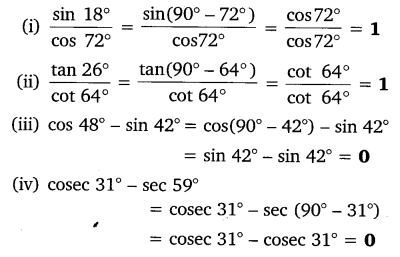
Question 3.
If tan 2A = cot (A – 18°), where 2A is an acute angle, find the value of A.
Solution:
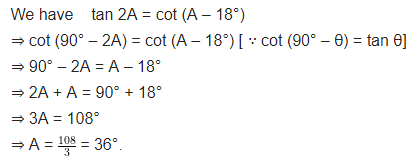
Question 5.
If sec 4A = cosec (A – 20°), where 4A is an acute angle, find the value of A.
Solution:

Question 6.
If A, B and C are interior angles of a triangle ABC, then show that: sin (B+C )/2 = cos A/2
Solution:

Question 7.
Express sin 61° + cos 75° in terms of trigonometric ratios of angles between 0° and 45°.
Solution:

Question 1.
Evaluate:![]()
Solution:
Question 3.
If tan 2A = cot (A – 18°), where 2A is an acute angle, find the value of A.
Solution:
Question 5.
If sec 4A = cosec (A – 20°), where 4A is an acute angle, find the value of A.
Solution:
Question 6.
If A, B and C are interior angles of a triangle ABC, then show that: sin (
Solution:
Question 7.
Express sin 61° + cos 75° in terms of trigonometric ratios of angles between 0° and 45°.
Solution:![]()
Ex 8.4
Question 1.
Express the trigonometric ratios sin A, sec A and tan A in terms of cot A.Solution:
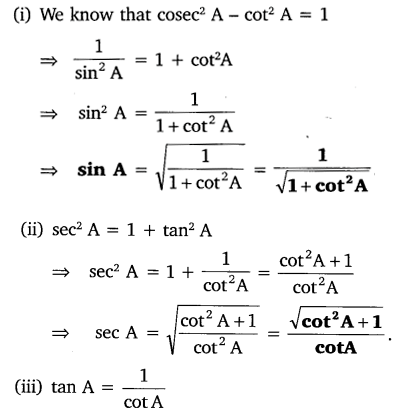
Question 2.
Write all the other trigonometric ratios of ∠A in terms of sec A.
Solution:
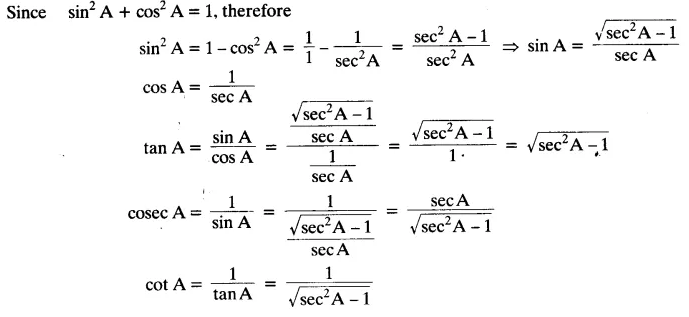
Question 3.Evaluate:

Solution:
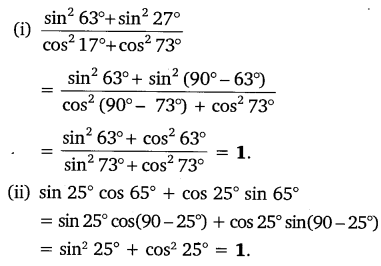
Question 4.
Choose the correct option. Justify your choice.
(i) 9 sec² A – 9 tan² A = ……
(A) 1 (B) 9
(C) 8 (D) 0
(ii) (1 + tan θ + sec θ) (1 + cot θ – cosec θ) = ………..
(A) 0 (B) 1
(C) 2 (D) -1
(iii) (sec A + tan A) (1 – sin A) = ………….
(A) sec A (B) sin A
(C) cosec A (D) cos A
(iv) 1+tan2A1+cot2A = ………..
(A) sec² A. (B) -1
(C) cot² A. (D) tan² A
Solution:
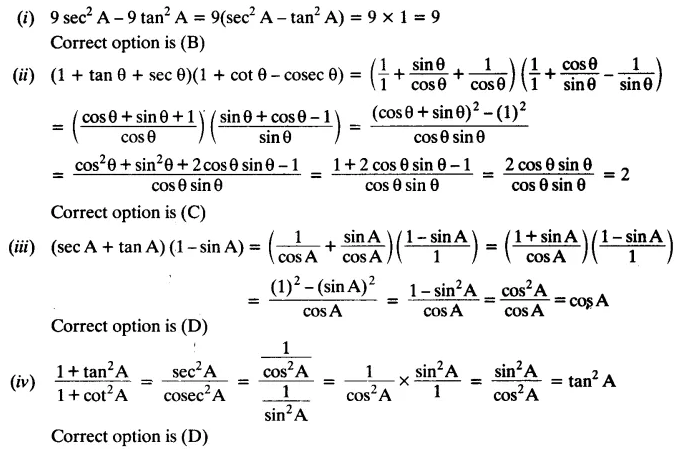
Question 5.
Prove the following identities, where the angles involved are acute angles for which the expressions are defined.
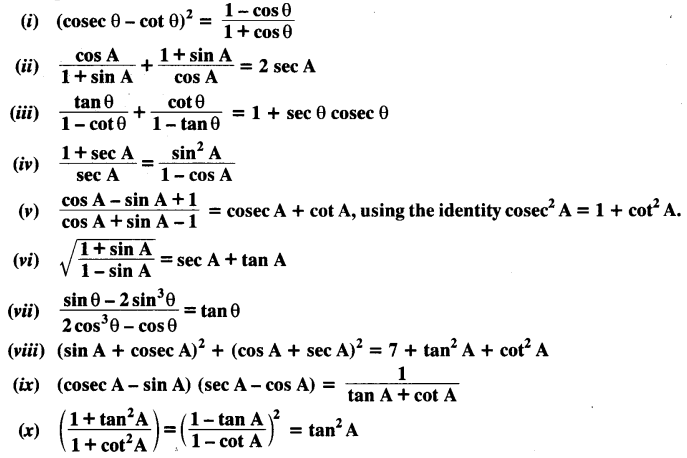
Solution:
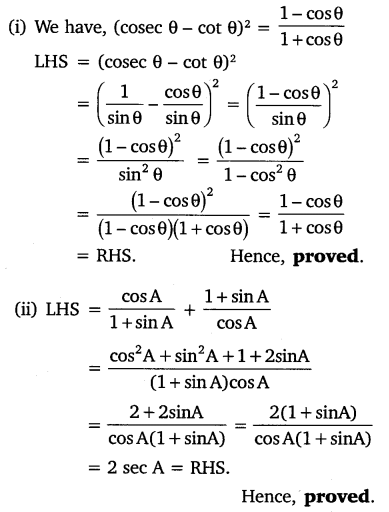
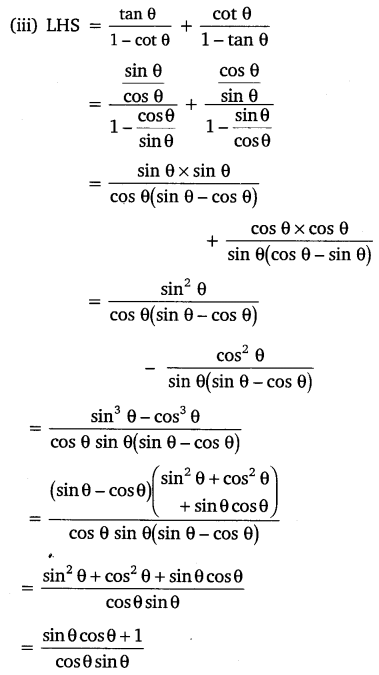
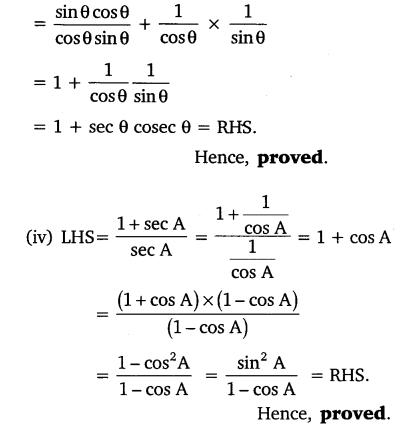
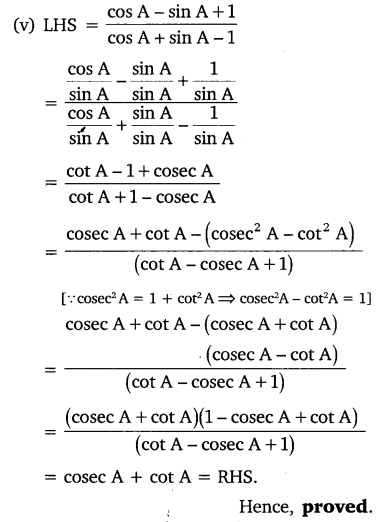
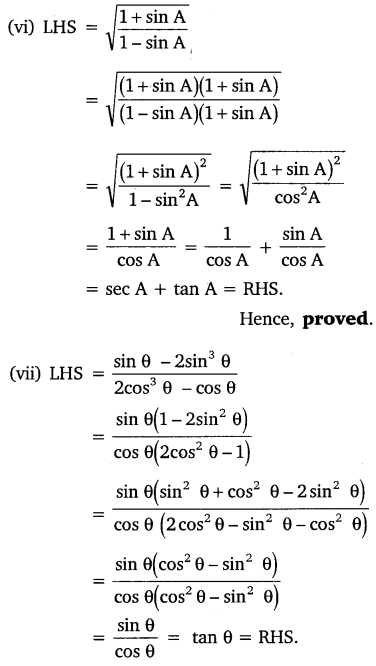
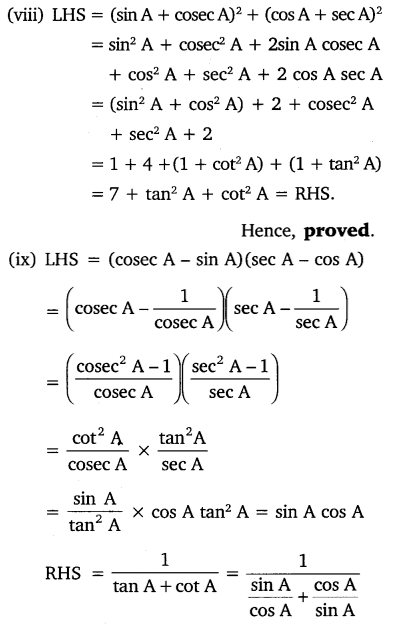
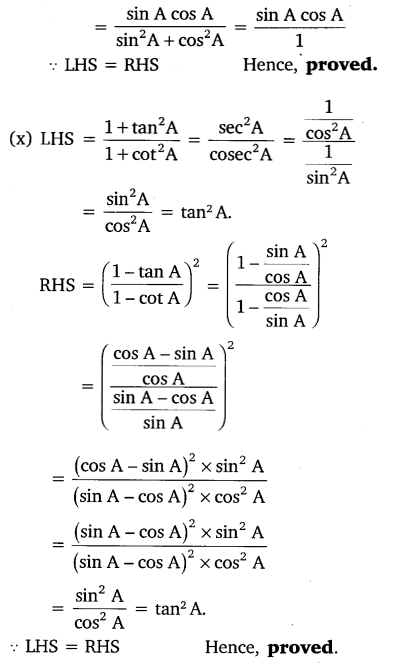
A
Question 1.
Express the trigonometric ratios sin A, sec A and tan A in terms of cot A.Solution:

Question 2.
Write all the other trigonometric ratios of ∠A in terms of sec A.
Solution:
Evaluate:
Solution:
Question 4.
Choose the correct option. Justify your choice.
(i) 9 sec² A – 9 tan² A = ……
(A) 1 (B) 9
(C) 8 (D) 0
(ii) (1 + tan θ + sec θ) (1 + cot θ – cosec θ) = ………..
(A) 0 (B) 1
(C) 2 (D) -1
(iii) (sec A + tan A) (1 – sin A) = ………….
(A) sec A (B) sin A
(C) cosec A (D) cos A
(iv)
(A) sec² A. (B) -1
(C) cot² A. (D) tan² A
Solution:
Question 5.
Prove the following identities, where the angles involved are acute angles for which the expressions are defined.
Solution:






A

























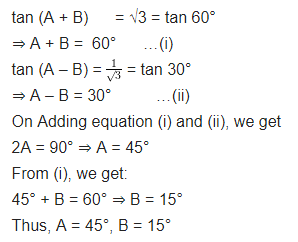
Post a Comment
Post a Comment